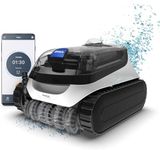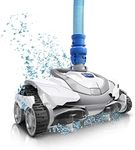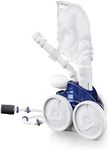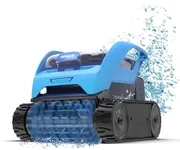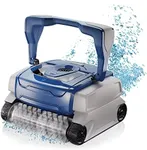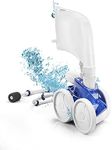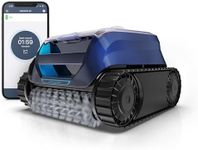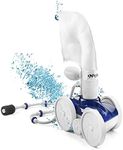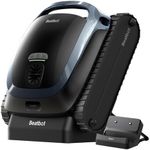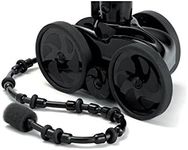Buying Guide for the Best Polaris Pool Cleaners
When it comes to choosing a Polaris pool cleaner, it's important to consider several key specifications to ensure you get the best fit for your pool. Polaris pool cleaners are known for their efficiency and reliability, but different models offer various features that cater to different needs. Understanding these specifications will help you make an informed decision and keep your pool sparkling clean with minimal effort.Type of Pool CleanerPolaris pool cleaners come in three main types: pressure-side, suction-side, and robotic. Pressure-side cleaners use the pool's return jet to move around and collect debris, making them ideal for larger pools with heavy debris. Suction-side cleaners connect to the pool's skimmer or dedicated suction line and are best for smaller pools with light to moderate debris. Robotic cleaners are self-contained units that operate independently of the pool's filtration system, offering the highest level of cleaning efficiency and convenience. Choose the type that best matches your pool size, debris load, and maintenance preferences.
Pool Size CompatibilityPool size compatibility refers to the maximum pool size that a cleaner can effectively handle. This is important because a cleaner designed for smaller pools may not perform well in larger pools, and vice versa. Polaris pool cleaners typically specify the maximum pool size they are designed for. For small to medium-sized pools, a cleaner with a shorter hose and less powerful motor may suffice. For larger pools, look for models with longer hoses and more powerful motors to ensure thorough cleaning.
Cleaning Cycle TimeCleaning cycle time is the duration it takes for the pool cleaner to complete a full cleaning cycle. This is important because it affects how long you need to run the cleaner to keep your pool clean. Shorter cycle times are more convenient and energy-efficient. Polaris pool cleaners offer various cycle times, ranging from quick cycles of 1-2 hours to longer cycles of 3-4 hours. If you prefer quick and frequent cleanings, opt for a model with a shorter cycle time. For less frequent but thorough cleanings, a longer cycle time may be more suitable.
Debris Handling CapacityDebris handling capacity refers to the amount and type of debris a pool cleaner can collect and store before needing to be emptied. This is important because it determines how often you need to clean out the debris bag or filter. Polaris pool cleaners come with different debris handling capacities, from small bags for light debris to larger bags for heavy debris. If your pool is surrounded by trees or experiences heavy debris, choose a model with a larger debris bag. For pools with minimal debris, a smaller capacity may be sufficient.
Ease of MaintenanceEase of maintenance refers to how simple it is to clean and maintain the pool cleaner. This is important because regular maintenance ensures the cleaner operates efficiently and has a longer lifespan. Polaris pool cleaners vary in their maintenance requirements, with some models featuring easy-to-access parts and simple cleaning processes. Look for models with user-friendly designs, such as quick-release debris bags and easy-to-clean filters, to make maintenance as hassle-free as possible. If you prefer minimal maintenance, consider a robotic cleaner with self-cleaning features.
Energy EfficiencyEnergy efficiency refers to how much power the pool cleaner consumes during operation. This is important because it affects your energy bills and the environmental impact of using the cleaner. Polaris pool cleaners have different energy consumption levels, with robotic cleaners generally being the most energy-efficient due to their independent operation and advanced technology. If energy efficiency is a priority for you, look for models with energy-saving features and lower power consumption. For those who prioritize powerful cleaning over energy savings, pressure-side or suction-side cleaners may be more suitable.


